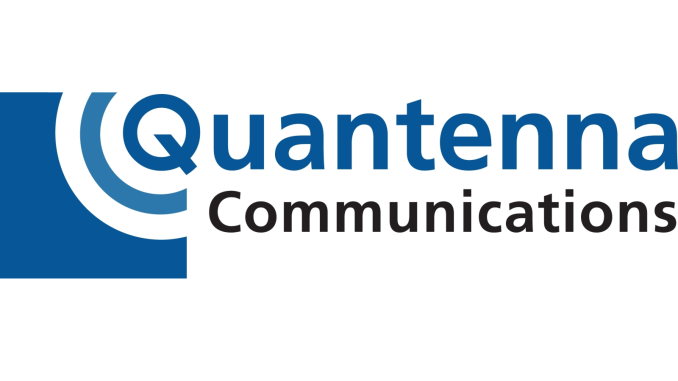Quantenna Announces Development of 10G Wi-Fi 802.11ac Chipset
by Ganesh T S on April 14, 2014 8:00 AM EST- Posted in
- Networking
- 802.11ac
- Wi-Fi
- Quantenna

At the beginning of 2012 Broadcom announced its first 802.11ac chipsets under the banner of 5G (5th generation) WiFi. Since then we've seen the latest high end notebooks adopt 802.11ac, as well as a handful of flagship smartphones and tablets. The first generation of 802.11ac devices brought 80MHz channels and 256-QAM to a 5GHz interface that enabled real transfer speeds of as much as 600/900Mbps (TCP/UDP) for a 3-antenna/3-stream solution.
We saw Wave2 chipsets being introduced by Quantenna at CES and, recently, Qualcomm. Recent draft amendments have enabled a few optional (WiFi Alliance certified) features:
1) 8-stream configurations (up from 3-stream previously)
2) up to 160MHz channels (up from 80MHz) (Wave2 only), and
3) Multi-user MIMO (MU-MIMO) (Wave2 only)
While Broadcom made a big splash with the 5G branding, Quantenna is taking the lead this time around with 10G. By taking advantages of MU-MIMO and putting in support for 8 spatial streams, Quantenna hopes to deliver speeds of up to 10 Gbps . Quantenna's massive 8x8 MIMO promises reduced interference while handling multiple devices simultaneously. While the 4x4 solution we covered at CES is expected to go into mass production later this year, the 8x8 chipset is expected to arrive in 2015.
Quantenna also took the opportunity of this development announcement to reiterate design wins / partnerships with Asus (consumer router, AC87U), Texas Instruments (enterprise and small cell LTE base stations), STMicro (SoC offerings) and Mimosa (outdoor wireless solutions).
8x8 802.11ac solutions may appear to be an overkill for home usage (few clients and none with more than two spatial streams), but they are definitely a great solution for wireless bridges and enterprise access points. Reliable high-range 10G Wi-Fi also has the ability to open up new applications. Beyond the chip design challenges that Quantenna aims to solve, system builders also have to handle power, antenna placement and other RF issues before 8x8 802.11ac-based products can hit the market.










19 Comments
View All Comments
dragonsqrrl - Monday, April 14, 2014 - link
Soo... any word on when we might start seeing integrated 10Gb on desktop chipsets?MikhailT - Tuesday, April 15, 2014 - link
The article gave the only clue we have: "While the 4x4 solution we covered at CES is expected to go into mass production later this year, the 8x8 chipset is expected to arrive in 2015."Routers with 8x8 (wave3) likely to show up in the second half of 2015, and for clients. I'd suspect late '16 or early '17 for 8x8 desktops and laptops.
I wouldn't expect the mobile device to get it before 2018, the power constraints are far greater.
golemB - Monday, April 14, 2014 - link
Ugh. The tech industry really should stop confusing consumers with "5G" meaning either "Fifth Generation" or "Five Gigabits/bytes" (and the same with any other number). If we're talking about ten gigabits per second, please write 10 Gbps or 10 Gb/s, not "10G." Otherwise you'll keep propagating more confusion (think of all the iPhone 4 owners who thought they had 4G mobile connections).ganeshts - Monday, April 14, 2014 - link
Unfortunately (or, fortunately, depending on the way you see it), 10G is Quantenna's branding for their 8x8 solution and it also happens to be capable of up to 10 Gbps theoretical speeds. At least it is better than Broadcom's 5G for the fifth-generation branding (the 5G Wi-Fi itself wasn't capable of 5 Gbps obviously).Likkie - Monday, April 14, 2014 - link
I agree, its so confusing at times. Although I think that 5G and 10G should refer to the speed since G is the official SI prefix for Giga. Whereas they should use 5Gen or Gen5 to refer to generation.Beany2013 - Tuesday, April 15, 2014 - link
They've got to try to make themselves look better than they actually are somehow, but at least 10G in this case actually refers to a potential speed (Even if no client for years is going to be capable of it, and likely no client at all on this generation of wireless - unless you can imagine a tablet with 8 antennas in it).It's almost as annoying as the whole 3G LTE/4G thing. When as I recall, they started calling extended 3G standard clients and networks 4G because, frankly, they thought it'd sell better, even though by that point the concept of a true 4G network and the speeds it would be capable of had been thrashed out, and 3G LTE was not, by a wide margin, anywhere close.
Gits.
Krysto - Monday, April 14, 2014 - link
Sounds like slightly boosted 802.11ac-2013:http://www.zdnet.com/super-fast-wi-fi-coming-802-1...
BMNify - Tuesday, April 15, 2014 - link
"Sounds like slightly boosted 802.11ac"it is.... notice though how the antiquated IEEE consensus couldn't even agree to use 1024-QAM 10 bits/second/Hz, never mind 4096 QAM 12 bits/second/Hz bonded channel's , having to make do with only 256 QAM 8 bits/second/Hz
"The IEEE 802.11ac specification adds channel bandwidths of 80 MHz and 160 MHz with both contiguous and non-contiguous 160 MHz channels for flexible channel assignment. It adds higher order modulation in the form of 256 quadrature amplitude modulation (QAM), providing an additional 33-percent improvement in data rate. A further doubling of the data rate is achieved by increasing the maximum number of spatial streams to eight."
LouisMGant - Tuesday, April 15, 2014 - link
Optical cables operate on the same principles as wireless signals. The difference is the medium (which, the optical medium is WAY more reliable and less prone to things like interference) http://s6x.it/l521